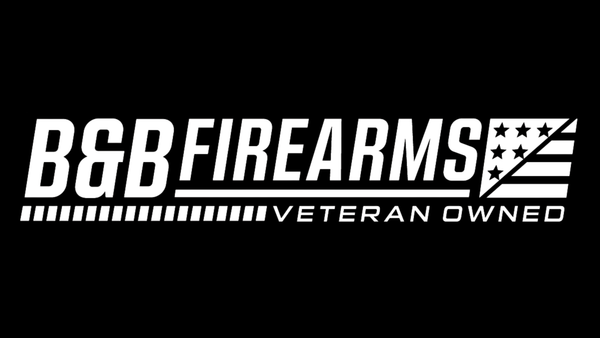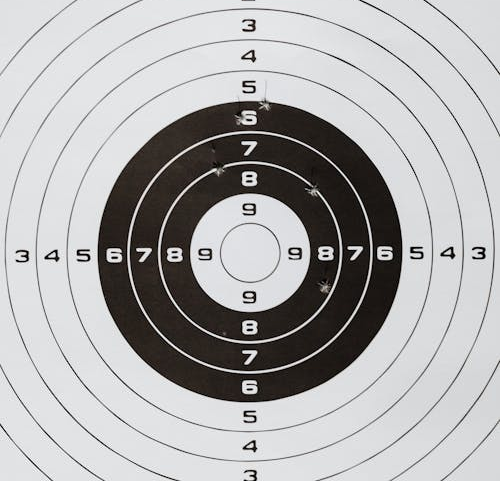Both precision and long range rifles can benefit from breaking in a barrel before really shooting in earnest, competitively or in the field. This is true to the point that many owner’s manuals come with specific, step-by-step instructions for how to break in the barrel.
Even if the manufacturer of your brand-new long range rifle didn’t publish instructions on how to break in the barrel, the rifle will still benefit from it. Here’s what you need to know, along with a high-level guide for barrel break-in.
Why to Break in a Long Range Rifle Barrel in the First Place
The idea behind breaking in a new rifle barrel is the same for all models, regardless of whether you will be driving tacks at intermediate ranges, hunting coyotes, or shooting at steel 900 yards (or more) away.
The process of breaking in a barrel, which involves firing a series of bullets through a brand new barrel, punctuated by meticulous, thorough cleaning, uses the bullet to (basically) “polish” the interior of the barrel, smoothing out any microscopic imperfections (such as burrs) that exist inside the bore or on the rifling, where it was physically cut from the bore.
The cleaning done between your shots helps to eliminate powder, lead and copper fouling that would get in the way and prevent the bullet from doing its job of smoothing out the barrel interior.
The reason for doing so should be obvious: a smoother bore and crisper, more precise rifling should result in greater pinpoint accuracy, which is especially significant for long range and precision rifles.
This is also the reason that most shooters agree a rifle will enter its era of peak performance, specifically accuracy, after you’ve put between 100 and 200 rounds downrange.
It is no coincidence, then, that most procedures for breaking in a barrel generally recommend between 50 and 200 shots to do so.
This also begs the question - do you need to actively break in a barrel, or can you just let it happen naturally by shooting the rifle?
Opinions on this differ. Some shooters are adamant that rifle break-in must be performed, others say that, like a good pair of boots, you can break in your rifle with use. In theory, at least, if you keep your rifle clean, it will break in on its own.
We won’t publish an edict on that here, but we will give you the basic process of barrel break-in that can be applied to more or less any precision or extreme long-range rifle.
The Process of Barrel Break in
First things first, if your new long range rifle came with an owner’s manual that contained specific instructions for how to break in the barrel, let those supersede anything we say here. This is just to serve exploratory and informational purposes. Always defer to the manufacturer’s recommendations, fall back on these only if you are not sure what the exact prescription is for your rifle.
The first thing you want to do with a brand new rifle is give it a good cleaning to make sure any oil, grease, or other substances that have been deposited on the barrel by the factory have been cleared out. A standard bore cleaning solvent will work here there’s no need to remove copper fouling.
Once you’ve given the rifle the preliminary cleaning, you can get to the live-fire portion of the long range rifle barrel break-in process.
After the initial cleaning, fire a group of three to five rounds at a target at a range with which you’re comfortable. For the purpose of break-in, there’s no need to be extreme here, you can shoot at 100 yards or so.
See how the rounds group, but you don’t necessarily need to do any sight-in adjustments here since the purpose of break-in is not the same as sighting. Obviously, you want to observe how the rifle’s groups are, but you don’t need to make any adjustments to the sights.
After you fire the first group, give the rifle another thorough cleaning to remove all powder fouling. Again, no copper fouling removal is necessary here, as some rifles actually shoot a little better with a bit of copper fouling, even though that seems counterintuitive (and it kind of is).
Fire another three to five rounds, see if your groupings improve. They might, they might not, but they shouldn’t get worse. Clean the rifle after you’ve fired this grouping just as you did the first time. Again, no copper fouling removal is necessary here.
Continue this process, until you’ve fired at least 50 rounds. When you’re done, clean the rifle before you put it away.
If you notice your groups improve slightly after every three to five rounds, you can continue shooting and cleaning as prescribed here until it seems as though improvements halt. Generally, for most shooters, this will be between 100 and 200 rounds, as indicated above in this article.
When you’re done, you’ll have a rifle with a bore that’s been smoothed out, broken in, and which has just a touch of copper fouling, which most rifle shooters will agree will improve accuracy slightly.
That’s basically all there is to breaking in a rifle barrel, either for a long range or a precision rifle barrel. When you’re done, clean the barrel thoroughly, and you’re ready for competition or long-range shooting.

Your Next Long Range or Precision Rifle Is Here
If you’re here for an extreme long range rifle or a precision rifle, we have what you’re looking for, with many of the top models from CheyTac, McMillan and Armalite well-represented.
We also offer a unique payment plan on many of the models we sell that requires only 20% down and then allows you to pay off the balance entirely interest-free over the next couple of weeks.
If you have any questions about the rifles we sell or the buyer-friendly financing we offer, get in touch with us directly and we’d be more than happy to help us out.

